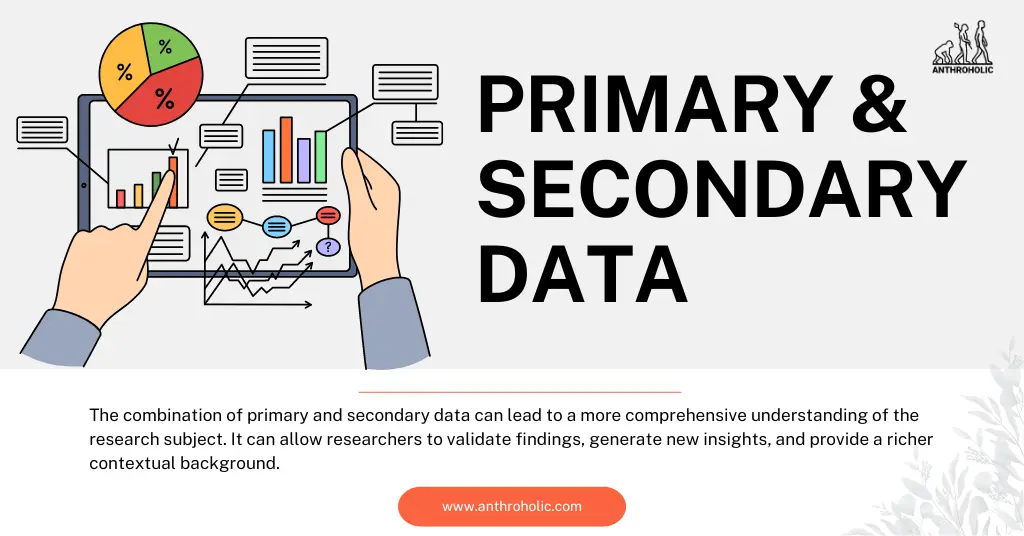AI Answer Evaluation Platform Live Now. Try Free Answer Evaluation Now
Primary and Secondary Data
Understanding data collection methods is crucial in the field of anthropology. Research can be enriched or limited by the type and quality of data gathered. Anthropological data can be divided into two main categories: primary and secondary data [1].

Primary Data
Definition and Methods
Primary data refers to information gathered directly from original sources, typically through observation, surveys, interviews, or experimentation [2].
Table 1: Primary Data Collection Methods
| Method | Description | Example in Anthropology |
|---|---|---|
| Observation | Gathering data through direct visual or auditory monitoring | Ethnographic fieldwork |
| Surveys | Utilizing questionnaires or interviews to gather information directly from participants | A survey on cultural practices |
| Experimentation | Conducting controlled experiments to collect data | Experimenting with cultural artifacts |
| Interviews | Conducting structured or unstructured conversations with subjects | In-depth interviews with tribal leaders |
Advantages and Disadvantages of Primary Data
Primary data provides a high degree of specificity and control, ensuring that the information is directly relevant to the research question [3].
- Advantages:
- Direct relevance to the research question
- Control over the quality and specificity of data
- Real-time and current information
- Disadvantages:
- Time-consuming
- Potentially expensive
- Requires skilled researchers
Secondary Data
Definition and Methods
Secondary data refers to data that has already been collected by others and is being used for a new research purpose [4].
Table 2: Sources of Secondary Data
| Source | Description | Example in Anthropology |
|---|---|---|
| Academic Journals | Published research papers and articles | Studies on historical cultural practices |
| Government Records | Census data, birth and death records, etc. | Demographic studies |
| Media Archives | Newspapers, magazines, video and audio recordings | Analyzing trends in cultural representation |
| Internet Sources | Websites, blogs, online forums, and social media platforms | Online ethnography |
Advantages and Disadvantages of Secondary Data
Secondary data offers several benefits and drawbacks, which must be weighed depending on the research objective.
- Advantages:
- Cost-effective
- Time-saving
- Wide range of data
- Disadvantages:
- Potential mismatch with research objectives
- Quality and reliability concerns
- Limited control over data collection
Combining Primary and Secondary Data in Anthropological Research
The combination of primary and secondary data can lead to a more comprehensive understanding of the research subject. It can allow researchers to validate findings, generate new insights, and provide a richer contextual background.
References
[1] Bernard, H. R. (2017). Research methods in anthropology: Qualitative and quantitative approaches. Rowman & Littlefield.
[2] Creswell, J. W., & Creswell, J. D. (2017). Research design: Qualitative, quantitative, and mixed methods approaches. Sage publications.
[3] Yin, R. K. (2017). Case study research and applications: Design and methods. Sage publications.
[4] Smith, K. (2019). Secondary data analysis: An introduction for psychologists. American Psychological Association.




